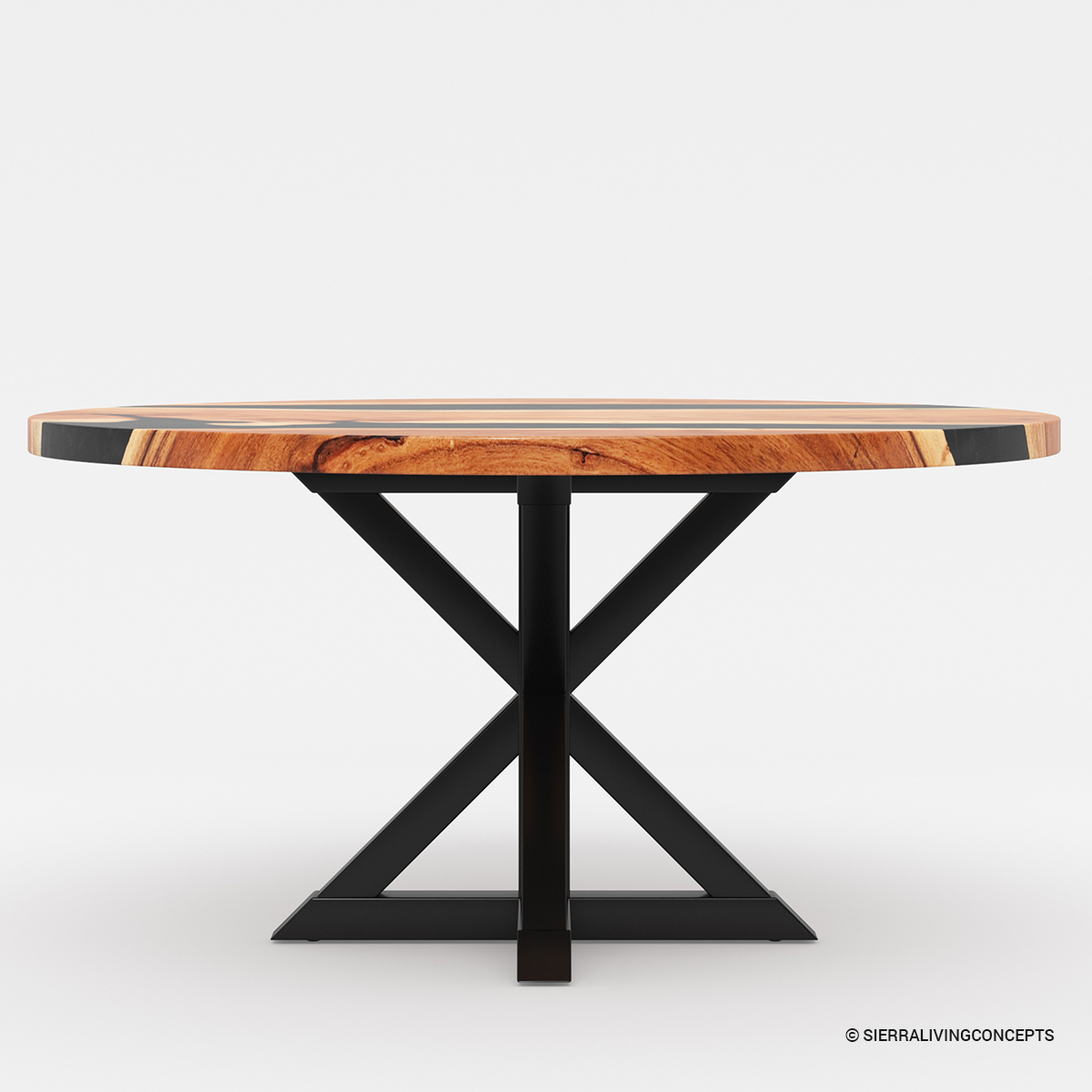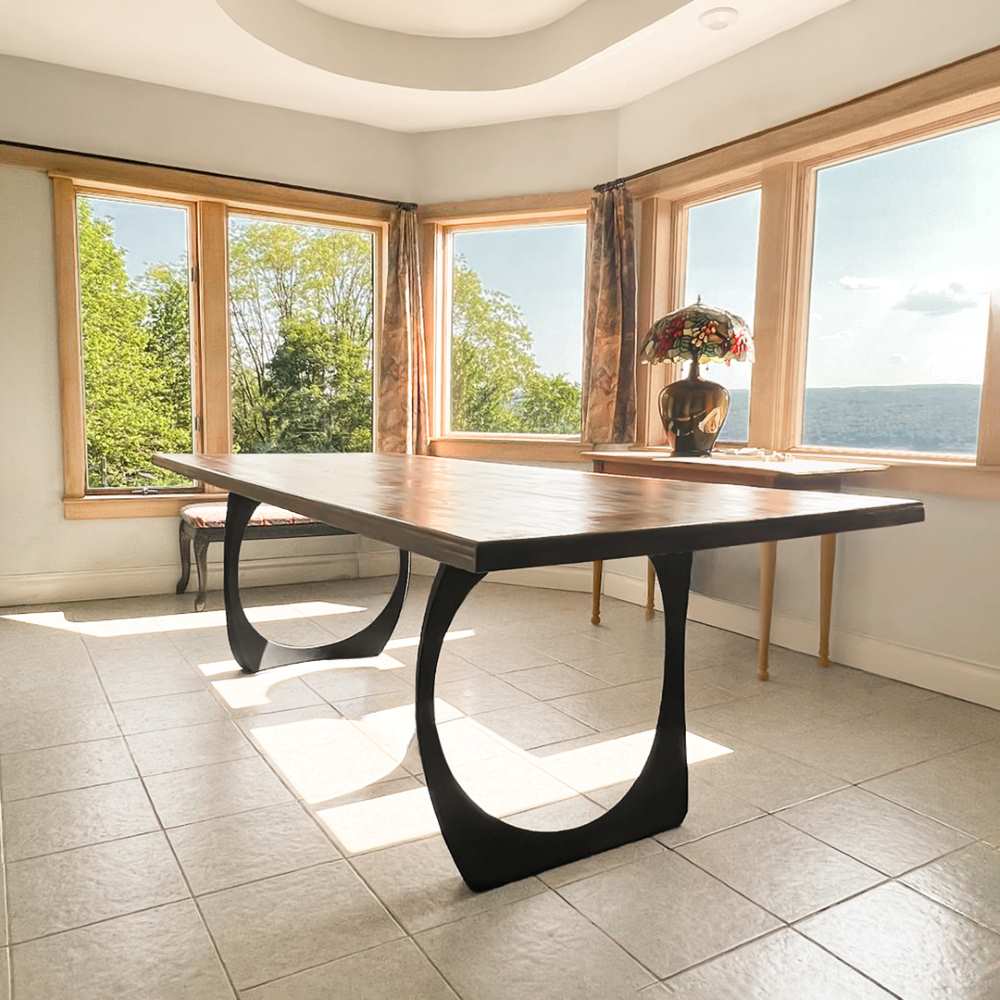Why Custom Dining Room Table Legs Are Worth the Investment
Why Custom Dining Room Table Legs Are Worth the Investment
Blog Article
From Standard to Modern: Find the Suitable Dining-room Table Legs for Your Design
While classic styles such as cabriole and transformed legs evoke a feeling of classic elegance, modern styles like hairpin and geometric choices present a chance for striking aesthetic interest. As you think about these aspects, the inquiry stays: just how can you perfectly incorporate these diverse leg designs to produce a harmonious dining experience?
Understanding Table Leg Styles
The selection of eating room table leg styles can substantially affect both the visual appeals and functionality of the space. Each leg design contributes special sensible attributes and aesthetic elements, accommodating diverse style preferences and use demands. Recognizing these styles is crucial for choosing the ideal table that aligns with your general interior decoration vision.
For example, tapered legs offer a tidy, timeless look that can boost an area's sophistication, while stand bases offer security and make best use of legroom, making them ideal for smaller sized areas. Barrette legs, a trademark of mid-century modern-day layout, introduce a commercial panache, permitting an airy, open feel. Likewise, trestle legs evoke rustic charm, supplying durable support and a feeling of timelessness.
In addition, the selection of materials plays a considerable function. Wood legs can bring heat and structure, whereas steel choices usually convey a smooth, modern vibe. Ultimately, recognizing table leg styles is crucial for developing a cohesive eating area that reflects personal design while guaranteeing usefulness and comfort. By attentively considering these components, you can enhance both the visual and functional appeal of your eating area.
Traditional Table Leg Options
When choosing dining-room table legs, conventional alternatives frequently personify classic beauty and craftsmanship. These layouts reflect a rich heritage and a dedication to top quality, making them suitable for those that appreciate traditional visual appeals.
Among one of the most legendary traditional leg designs is the cabriole leg, identified by its stylish bent shape. This style commonly includes ornamental makings and is most frequently located in Queen Anne and Chippendale furniture. One more popular choice is the turned leg, which boasts a series of smooth, rounded shapes that give a timeless look while keeping security.
Moreover, the straight leg, while straightforward, offers a basic and tough structure that can blend effortlessly with a selection of tabletop designs. For those attracted to ornate describing, claw-and-ball feet legs evoke a feeling of magnificence and can offer as a magnificent focal point in any type of eating room.
Lastly, stand bases, although not strictly legs, supply an alternate conventional alternative that permits for adequate legroom and can be magnificently sculpted. Each of these standard leg designs adds to the general setting of an eating room, weding function with aesthetic allure.

Modern Table Leg Styles
Modern table leg styles use a diverse series of designs that highlight tidy lines and cutting-edge materials. These designs often prioritize functionality while acting as striking focal points within a dining space. Minimalist aesthetic appeals are prevalent, with legs crafted from products such as steel, glass, and engineered timber, which add to a modern and ventilated feeling.
One popular layout is the hairpin leg, defined by its slim, tapered framework that gives stability without overwhelming the table top (dining room table legs). This design is usually discovered in mid-century contemporary furniture and can easily complement different table forms. Another fad is the use of geometric shapes, where legs may handle angular or asymmetrical kinds, adding visual rate of interest and a touch of virtuosity

Mixing Styles for Special Rooms
Often, homeowners look for to create unique eating rooms that reflect their personal style by mixing various layout components. This approach enables for the consolidation of varied aesthetic appeals, resulting in an unified yet distinctive atmosphere. For instance, matching a rustic wood table with streamlined, contemporary metal legs can produce a captivating comparison that raises the space's general allure.
In addition, integrating vintage table legs with modern tabletops can stimulate a feeling of history while keeping a contemporary sensibility. Such combinations not only display individual taste yet likewise encourage creativity, permitting house owners to curate a room that feels both personal and inviting.
Color plays a crucial function in this mixing procedure; choosing table legs that match or contrast read this article with the existing color design can improve visual interest. For instance, whitewashed legs can soften the daring of a dark table surface area, developing a well balanced aesthetic.
Tips for Choosing the Right Legs
Choosing the right table legs is necessary for accomplishing both functionality and aesthetic allure in your dining space. Begin by considering the general design of your area. Typical settings take advantage of legs that include detailed carvings or turned layouts, while modern rooms may require sleek, minimalist styles.
Next, analyze the elevation and stability of the legs. dining room table legs. Conventional table range between 28 to 30 inches in elevation, so make sure the legs enhance this dimension for convenience. In addition, robust materials, such as wood or metal, can improve stability and durability
Evaluate the leg form also-- alternatives consist of right, tapered, or pedestal styles. Straight legs offer a timeless appearance, while tapered legs can add a touch of elegance. Pedestal bases offer adequate legroom and are suitable for smaller sized spaces.
Final Thought
In recap, picking the suitable dining area table legs needs mindful factor to consider of both modern and traditional designs. By integrating leg style, height, and product look at these guys with the overall decoration, a natural and inviting atmosphere can be attained.
The variety of dining room table leg styles can dramatically affect both the aesthetics and performance of the room. Eventually, comprehending table leg designs is necessary for developing a cohesive dining area that mirrors personal design while making sure usefulness and comfort.One of the most iconic traditional leg styles is the cabriole leg, defined by its graceful bent shape. Straight legs offer a timeless appearance, while tapered legs can include a touch of style.In summary, picking the suitable eating area table legs needs careful consideration of both contemporary and traditional designs.
Report this page